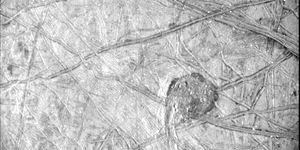Potential For 24/7 Solar Power from Solar Harvesting
In a recent study published in Physical Review Applied, a team of researchers from the University of Houston reports on a record-breaking solar energy harvesting system that exceeds efficiency for current technologies in the field. The most important feature of this research is that it holds the potential to use solar power 24/7, since finding more efficient methods in harnessing solar energy is crucial in the quest in transitioning towards a carbon-free electric grid.
"With our architecture, the solar energy harvesting efficiency can be improved to the thermodynamic limit," the study reports.
"In this work, we show that the efficiency deficit is caused by the inevitable back emission of the intermediate layer towards the sun resulting from the reciprocity of the system. We propose nonreciprocal STPV systems that utilize an intermediate layer with nonreciprocal radiative properties," said Dr. Bo Zhao, who is a Kalsi Assistant Professor of mechanical engineering at the University of Houston, and co-author of the study. "Such a nonreciprocal intermediate layer can substantially suppress its back emission to the sun and funnel more photon flux towards the cell. We show that, with such improvement, the nonreciprocal STPV system can reach the Landsberg limit, and practical STPV systems with single-junction photovoltaic cells can also experience a significant efficiency boost." The acronym STPV stands for solar thermophotovoltaics.
One example of an application for STPVs is that they can be combined with an economical thermal energy storage system capable of generating 24/7 electricity.
"Our work highlights the great potential of nonreciprocal thermal photonic components in energy applications. The proposed system offers a new pathway to improve the performance of STPV systems significantly. It may pave the way for nonreciprocal systems to be implemented in practical STPV systems currently used in power plants," said Dr. Zhao.
Sources: Physical Review Applied
As always, keep doing science & keep looking up!









